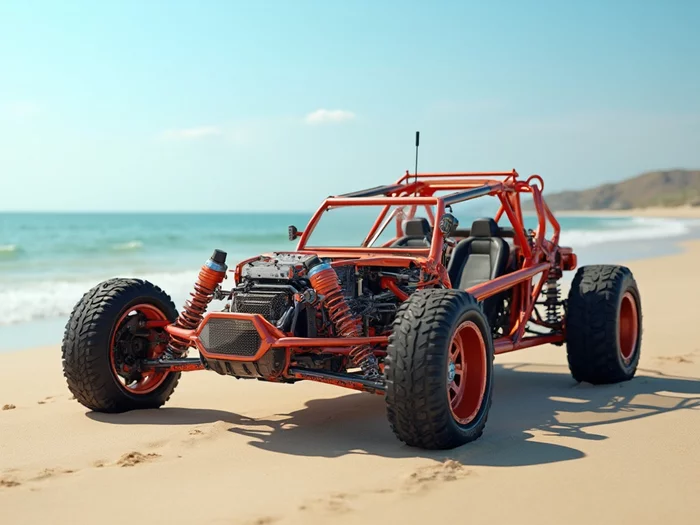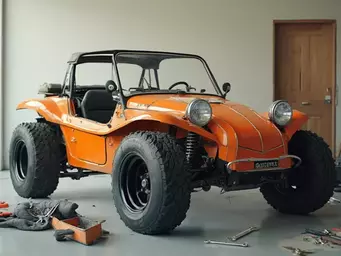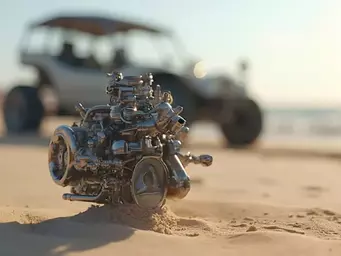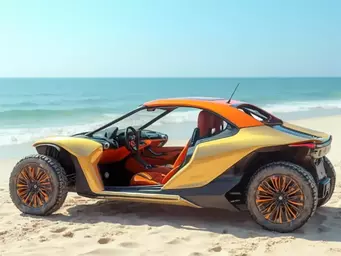Steel
- Durable and strong
- Heavier, impacting speed
- Commonly used
Get the latest beach buggy build guides, restoration tips, and performance upgrades delivered directly to you.
Posted on: 2025-10-14
By: Jasper Quinn
Building your own beach buggy is an exciting venture that requires careful consideration of various design elements. With the right knowledge, you can craft a vehicle that not only looks great but performs exceptionally well on sandy terrains. Ready to transform your vision into reality?
The choice of materials for your beach buggy chassis significantly impacts its performance and durability. Below is a comparison of common materials.
When diving into the world of beach buggies, the chassis design is the backbone of your build. A well-thought-out chassis not only contributes to the aesthetic but also significantly impacts performance. Let’s explore some key definitions and concepts that will set you on the right path to understanding how to build the perfect beach buggy!
The chassis serves as the frame of your beach buggy, holding all the essential components in place while providing structural integrity. Understanding terms like “wheelbase,” “track width,” and “weight distribution” is crucial for optimizing your design. For a detailed exploration of chassis design and its impact on vehicle dynamics, you can refer to this informative PDF on chassis concepts. Here’s a brief rundown of these essential concepts:
By grasping these concepts, you can create a chassis that meets your specific performance goals while maintaining safety on sandy terrains. So, what other factors should you consider?
The choice of materials for your chassis is pivotal. Each material comes with its own set of advantages and challenges. Steel is commonly used for its strength and durability, while aluminum offers a lightweight alternative. For those looking to build a more budget-friendly option, PVC can work, especially for prototype buggies or light use. Here’s a quick comparison:
Choosing the right material depends on your specific needs, whether that’s durability for rough terrains or weight for speed. Consider what works best for your build!
As you plan your chassis, consider how the design will influence performance. Factors such as center of gravity and suspension compatibility are vital to creating a beach buggy that performs well in sand. You’ll want to focus on a low center of gravity to improve stability, especially when cornering at higher speeds. For more insights on optimal buggy chassis design, check out this detailed presentation on buggy chassis design.
With these design considerations in mind, you’ll be on your way to crafting a well-rounded chassis that can handle the challenges of beach driving. So, are you ready to get your hands dirty and start building?
When selecting materials for your beach buggy chassis, consider not only weight but also the environment where you'll be driving. For sandy terrains, aluminum is often the best choice due to its lightweight nature and corrosion resistance, which helps maintain performance over time.
Building your own beach buggy is an exciting journey, but understanding the key steps in selecting and sourcing components can make all the difference. From choosing the right chassis to finding reliable suppliers, having a clear plan will set you up for success. Let’s break down the essential steps you’ll need to follow during this process!
As we recap these steps, remember to keep your personal style and performance goals in mind. Each choice should reflect your vision for the buggy, making your project both functional and uniquely yours! This is the heart of the DIY spirit that drives us at Beach Buggy Builders, and I’m excited for you to embrace it!
As you embark on your beach buggy project, it’s important to remember that patience and persistence are key. You might encounter challenges along the way, but these hurdles are simply opportunities to learn and grow. When I built my first buggy, I faced plenty of setbacks, but each one taught me something valuable and brought me closer to my dream ride!
Don’t rush the process! Take your time to choose quality parts and ensure everything fits perfectly. A well-constructed chassis and carefully selected components will create a solid foundation for your beach buggy. Plus, being thorough now will save you trouble down the line and enhance your overall experience on the sand.
Now that you have a grasp on the key steps to select and source your components, it’s time to gather everything you need for your build. Start by creating a list of materials based on your design and the parts you've identified. This could include chassis materials, suspension components, and any custom features you want to include. Here’s a handy checklist to help you get started:
By gathering your materials methodically, you'll be setting yourself up for a smoother build process. Plus, it’s always thrilling to see your parts begin to accumulate, marking the start of your project!
As you dive into your beach buggy project, I encourage you to connect with our vibrant community at Beach Buggy Builders! Sharing your experiences, asking questions, and exchanging tips can be incredibly beneficial. Not only will you find support, but you’ll also discover a wealth of resources—from guides to workshops—that can help you along the way.
Join us today and let’s embark on this thrilling adventure together! Your dream beach buggy awaits—let’s get building!
Here is a quick recap of the important points discussed in the article:

 What if every turn of the wrench not only transformed your beach buggy but also deepened your passio
What if every turn of the wrench not only transformed your beach buggy but also deepened your passio
 Upgrading your beach buggy isn't just about power—it's a journey towards better performance and en
Upgrading your beach buggy isn't just about power—it's a journey towards better performance and en
 Have you ever felt the thrill of cruising along the shore in a custom beach buggy, the sun warming y
Have you ever felt the thrill of cruising along the shore in a custom beach buggy, the sun warming y